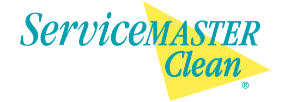
Precautions To Take When Using High-Level Disinfectants
Precautions To Take When Using High-Level Disinfectants
High-Level Disinfectants (HLD) are used specifically in health care facilities to clean and disinfect semi-critical surfaces and eliminate all kinds of microorganisms other than bacterial spores. However, since HLDs contain harsh chemicals, proper precautions are required to use them to ensure the safety of healthcare professionals.
High-Level Disinfectants are used to eliminate microorganisms from semi-critical surfaces that come in contact with non-intact skin and mucous membrane. These may include rubber tubing, catheters, lensed instrument, and hinged instruments. It is important to determine the comparability of the surface with the disinfectant being used, such as hydrogen peroxide could potentially corrode a surface.
The following are general recommendations by OSHA (Occupational Safety and Health Administrations) for best practices when using HLDs like glutaraldehyde in healthcare settings:
Proper Ventilation
One of the most common side-effects of HLD exposure is difficulty breathing and asthma. Therefore, OSHA recommends that any room that an HLD like glutaraldehyde is used in, should be well-ventilated. A room should have the very minimum of 10 air exchanges per hour to be considered ventilated.
Safe Transportation and Storage of HLDs
Since HLDs are toxic, utmost caution should be taken when transporting and storing them. When being transported, they should be stored in closed containers with tight-fitting lids. Even when storing, similar containers should be used to reduce accidental exposure. If the solution is past its best date, they should also be disposed of carefully. Additionally, the HLDs should be stored in a well-ventilated room to reduce any chances of exposure.
Safe Handling of HLDs
OSHA has certain tips for handling HLDs:
- Do not handle HLDs without the required PPE such as gloves, masks.
- When transferring the solution to any reservoirs, make sure to pour slowly and carefully to avoid any splashes.
- Use tightly fitting lids on soaking containers and basins.
- Rinse any equipment that might have come in contact with the HLD with running water as close as possible to the soaking tubs.
- HLds should only be used in areas with good ventilation and where traffic can be controlled.
- If a small spill occurs, your staff should clean them up immediately.
- In case of large spills, employees should close doors, alert other staff and contact the Hazmat team.
When handling toxic chemicals and servicing a healthcare facility, it is important to employ well trained and experienced professionals. The Service Master Elite Cleaning crew members are experienced, trained and adept at handling all situations when cleaning a medical facility. Call us today for a consultation.

